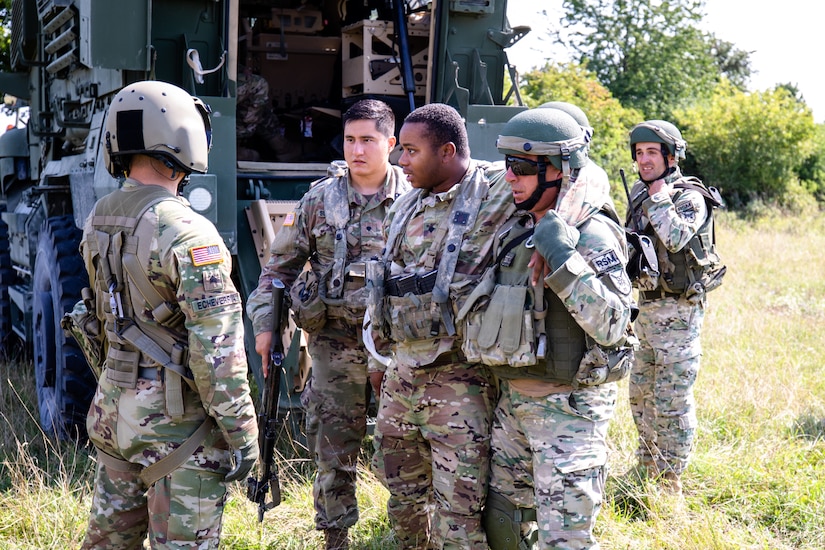By Army Pfc. Matthew Marcellus, 24th Press Camp Headquarters
HOHENFELS TRAINING AREA, Germany -- The continuous dramatic
thumping of the HH-60M Black Hawk helicopter’s rotor blades announced the
arrival of help from above as the 4th Infantry Division’s 2nd General Support
Aviation Battalion conducted a series of aviation and medical evacuation training
exercises here in support of the Georgian military and Operation Atlantic
Resolve, Aug. 21.
“We’re out here supporting Georgian troops who are being
trained by U.S. Marine Corps joint terminal attack controllers, and are getting
ready for deployment,” said Army Sgt. Rodolfo Echeverria, a flight medic with
Charlie Company C, 2nd GSAB. “Out here in the field, they’re running through
company- and platoon-level training lanes, and we’re also doing medical
evacuation so that they have some training with the helicopters.”
The 2nd GSAB has been conducting the joint exercises since
Aug. 19, and has focused on training designed to simulate combat scenarios.
“It’s important for the Georgians to know how to respond and
work with U.S. medevac assets,” said Army Chief Warrant Officer 2 Jacob Martin,
a pilot with the 2nd GSAB. “When they deploy, they will know how to evacuate
their wounded.”
Preparing for Deployment
The Georgian military is preparing to deploy to Afghanistan,
where it is crucial that they are able to communicate and work with medical
assets in a timely, safe and efficient manner.
“They‘ll know some more about how the process works and how
to approach the aircraft safely,” Echeverria said. “If they have to call in a
medical evacuation, I feel like they’re pretty well prepared now.”
Training such as this further builds relationships between
the U.S. Army and its Georgian partners, the soldiers said.
“This fosters a good spirit, they know that they can rely on
us,” said Army Chief Warrant Officer 2 Michelle Huang, a pilot in command for
the training mission with the 2nd GSAB. “They can call us, and we’ll come to
get them.”
The exercises are multifaceted and are necessary training
for both the 2nd GSAB as well as the Georgian military.
“It’s imperative that we get out here to conduct this type
of training,” Martin said. “We are not able to do realistic training unless
there is a ground piece as well.”
Joint training between the U.S. Army and its European allies
ensures the readiness, agility and lethality of coalition forces, Huang said.
“The more that we can train with our coalition forces here,
before they enter combat, the better,” she said. “We’ll have better camaraderie
and a stronger working relationship with our allies.”







No comments:
Post a Comment